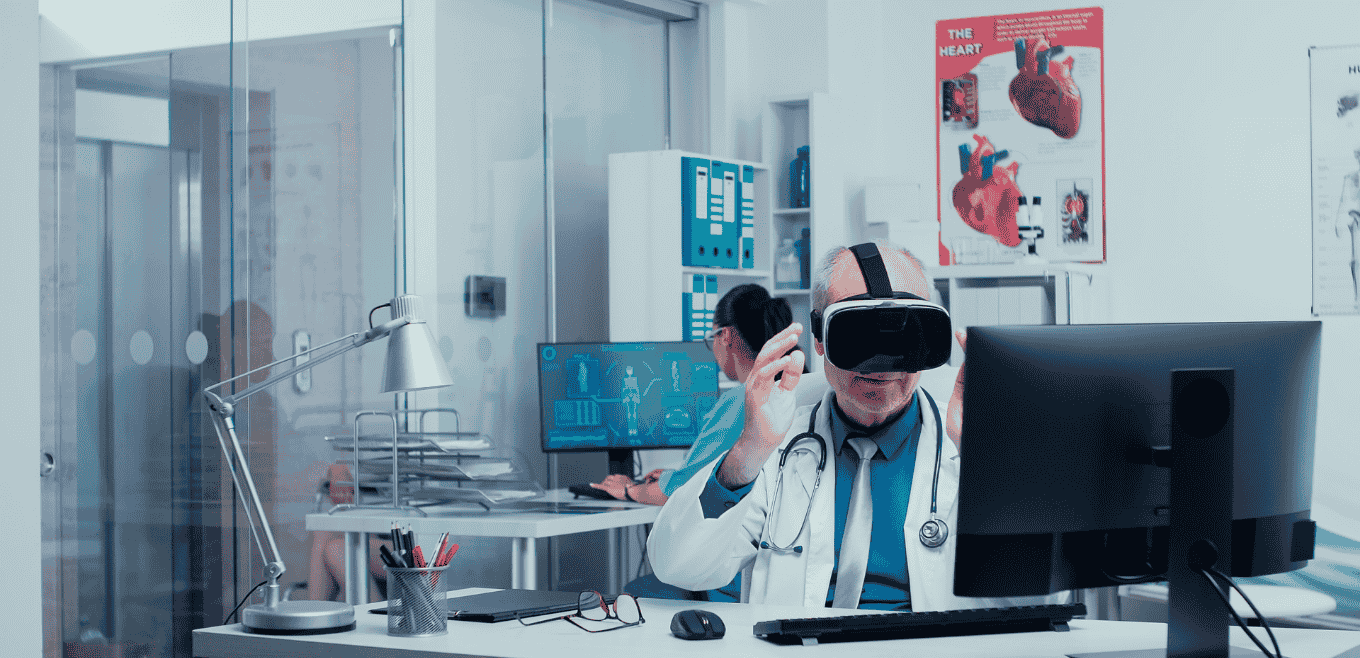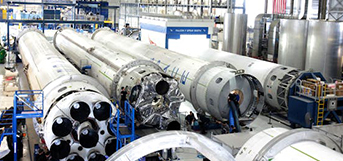Looking back, it’s incredible to see how far technology has advanced.
Like every industry, even the healthcare industry is evolving faster than ever, and technology is at the heart of this transformation. From artificial intelligence diagnosing diseases to wearable devices tracking our health in real-time, we are witnessing a revolution in the way healthcare is delivered.
In this blog, we’ll explore the most exciting healthcare technology trends and innovations shaping the future. Whether telemedicine brings healthcare right to your doorstep or personalized medicine offers treatments tailored specifically to you, these advancements are changing the game.
But why does this matter? Because these innovations aren’t just buzzwords—they’re creating real impact. They’re making healthcare more efficient, and accessible, and, most importantly, improving patient outcomes. If you’re curious about the latest in healthcare tech, you’re in the right place!
And if you’re looking to embrace these trends for your healthcare services, we’re here to help. With our expertise in digital healthcare solutions, we can support you in integrating these cutting-edge technologies into your organization. Now let’s look at the trends and innovations.
IoMT and Wearable Technology
The Internet of Medical Things (IoMT) and wearable technology are game-changers in modern healthcare. They enable real-time patient monitoring and more personalized care.
According to Grandview Research, the global Internet of Medical Things (IoMT) market size is expected to grow at a compound annual growth rate (CAGR) of 20.4% by 2030.
IoMT refers to a network of connected medical devices, such as remote health monitors and smart hospital systems, that collect and share data seamlessly. This allows healthcare providers to track patients’ vitals from anywhere, improving proactive care and reducing hospital readmissions.
On the other hand, wearable technology, like fitness trackers and smartwatches, empowers individuals to monitor their health continuously. These devices track key metrics such as heart rate, blood pressure, and glucose levels, helping patients manage chronic conditions with ease.
Together, IoMT and wearables are driving healthcare innovation, offering better disease management, predictive healthcare, and more personalized treatment plans. As these technologies grow, so will the need for data security to protect sensitive health information.
Telemedicine and EMR: The New Era of Virtual Healthcare
Healthcare has gone digital, and it’s changing the way we receive care. Electronic Medical Records (EMR) and telemedicine are key drivers of this transformation, making healthcare more accessible, efficient, and personalized.
With EMRs, all your health information—whether it’s from a GP visit, a specialist, or a hospital stay—is stored digitally in one place. This means doctors can see your complete medical history at a glance, allowing for more accurate diagnoses and personalized care. No more hunting down scattered medical files or risking miscommunication between healthcare providers. Plus, digital records make it easier to track health trends over time, improving patient outcomes.
But it doesn’t stop there. Telemedicine has taken healthcare beyond the clinic walls. With virtual consultations and digital health platforms, patients can now connect with doctors from anywhere—whether you’re managing a chronic condition through remote patient monitoring or seeking expert advice from the comfort of your home. This technology also expands healthcare access to rural areas, bridging the gap where in-person visits are difficult.
By embracing these innovations, healthcare is becoming more patient-centric, providing faster, more accurate care without the hassle of traditional paperwork or the need to visit a clinic for every check-up.
How Can Seamless EHR/EMR Integration Transform Telehealth?
Discover how People10 revolutionized a cloud-based telehealth platform through EHR/EMR integration, enhancing patient care, reducing missed appointments, and ensuring secure, compliant healthcare services.
Artificial Intelligence (AI) and Machine Learning (ML)
Artificial Intelligence and Machine Learning are making waves in healthcare, transforming the way providers deliver care and improve patient outcomes. These advanced technologies can analyze vast amounts of data, identify patterns, and generate valuable insights that enhance decision-making in diagnostics and treatment plans.
Predictive analytics for disease prevention
AI’s predictive analytics capabilities are game-changers in disease prevention. By evaluating historical health data, AI can identify trends and predict potential health risks, enabling proactive care. For instance, systems like Epic EHR leverage AI to forecast patient outcomes, helping providers intervene before issues escalate.
Enhancing medical imaging
AI is also revolutionizing medical imaging. With its ability to enhance image quality and automate analysis, healthcare providers can gain clearer insights faster. This technology allows for more precise diagnoses, improving the overall quality of care.
Implementing AI and ML
To successfully integrate AI and ML into healthcare, organizations should focus on data quality, interdisciplinary collaboration, and ethical AI development. Ensuring high-quality data is crucial, as is fostering teamwork among healthcare professionals, data scientists, and IT experts. Transparency through Explainable AI (XAI) is also vital for building trust between providers and patients.
At People10, we help healthcare organizations unlock the full potential of AI through seamless integration with existing systems. Our AI services ensure that your healthcare software solutions evolve with changing technological landscapes, improving patient care and operational efficiency.
Ready to explore how AI and ML can transform your healthcare practice?
Cloud Computing and Big Data Analytics
In today’s fast-paced healthcare environment, cloud computing and big data analytics are reshaping patient care. These technologies enhance efficiency, streamline operations, and improve patient outcomes.
Real-time data sharing for better care coordination
Cloud storage allows healthcare professionals to access patient data in real-time, improving care coordination. This accessibility reduces errors and ensures that every team member has the information needed for optimal care.
Big Data for Population Health Management
Big data empowers clinicians to identify trends and track disease outbreaks. By analyzing vast datasets, healthcare providers can implement targeted interventions and preventive measures, ultimately saving lives.
Data-driven clinical decision support
Integrating big data into clinical workflows equips healthcare professionals with powerful decision-support tools. These insights help clinicians make informed decisions about treatment plans, enhancing patient safety.
Augmented Reality (AR) and Virtual Reality (VR): Transforming Healthcare Education and Patient Care

Imagine stepping into a hospital without leaving your classroom. With Virtual Reality (VR), medical students can immerse themselves in realistic simulations, practicing their skills in lifelike scenarios. This hands-on approach allows them to navigate complex situations and enhance their learning without the pressure of dealing with actual patients.
On the other hand, Augmented Reality (AR) enriches the real world with valuable information. Care providers can access patient data and reports right at their fingertips, all while interacting with patients. Whether through voice commands or automatically appearing data, AR ensures that essential information is always within reach.
Digital Twin Technology takes this a step further. By creating virtual replicas of medical devices and materials, engineers can test and refine products in a simulated environment before they ever reach the lab. This not only accelerates the prototyping process but also saves time and costs, paving the way for innovative medical solutions.
The benefits of these technologies extend beyond training and design. VR can alleviate anxiety and depression, providing therapeutic experiences for patients. Meanwhile, AR assists surgeons in performing complex procedures, enhancing precision and outcomes.
As we embrace these innovations—like RFID for real-time patient tracking and 3D printing for custom prosthetics—the future of healthcare looks promising. With AR and VR leading the charge, we’re witnessing a revolution in patient education, engagement, and care.
Cybersecurity in Healthcare: Safeguarding Sensitive Data
As healthcare continues to embrace digital transformation, the need for robust cybersecurity measures has never been more critical. With the rise of electronic health records (EHRs), telemedicine, and connected devices, the amount of sensitive patient data being stored and transmitted has surged—making the healthcare sector a prime target for ransomware attacks, data breaches, and hacks.
Compliance with Healthcare Regulations (HIPAA, GDPR)
Healthcare organizations must adhere to data protection regulations like HIPAA in the U.S. and GDPR in Europe. These regulations require strict safeguards to protect patient data and impose penalties for non-compliance. HIPAA mandates physical, administrative, and technical protections, while GDPR grants patients rights over their data, such as access, correction, and deletion.
Ensuring compliance not only protects patient privacy but also shields healthcare organizations from legal consequences. Combining regulatory adherence with strong cybersecurity measures is crucial for maintaining trust in healthcare systems.
Mobile Health (mHealth) Apps
Mobile health apps have revolutionized patient care by offering self-management tools that empower individuals to take control of their health. Patients can now monitor chronic conditions like diabetes or heart disease with real-time data, helping them stay on top of their treatments and avoid complications.
mHealth apps is a robust software development that supports digital therapeutics and diagnostics, providing tailored interventions and insights directly from smartphones. These tools offer a more proactive, accessible, and personalized approach to healthcare, enabling patients to actively participate in managing their conditions while improving overall outcomes.
Conclusion
Technology is revolutionizing healthcare, driving advancements in patient care, operational efficiency, and global health access. From AI-driven diagnostics to personalized mHealth apps, these innovations are improving outcomes while helping providers meet the demands of modern, patient-centered care. Embracing these technologies is key to staying competitive and delivering top-tier healthcare in the future.
Adopting cutting-edge tools like cloud computing, big data, AI, and digital health is crucial for healthcare organizations to excel. As challenges intensify and patient expectations rise, partnering with experts like People10—who bring extensive knowledge of the latest healthcare trends—can help you lead the charge in delivering exceptional care and sustainable solutions.
Ready to Lead the Future of Healthcare?
Transform your healthcare operations with the power of innovation.
Author
A seasoned tech leader with 20+ years of experience, Nisha drives global business development and client relations at People10.


